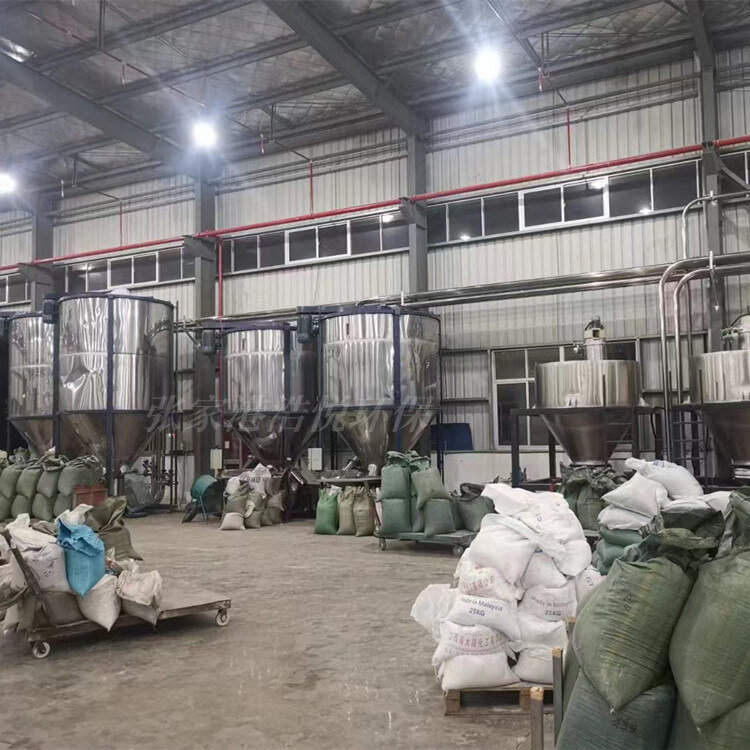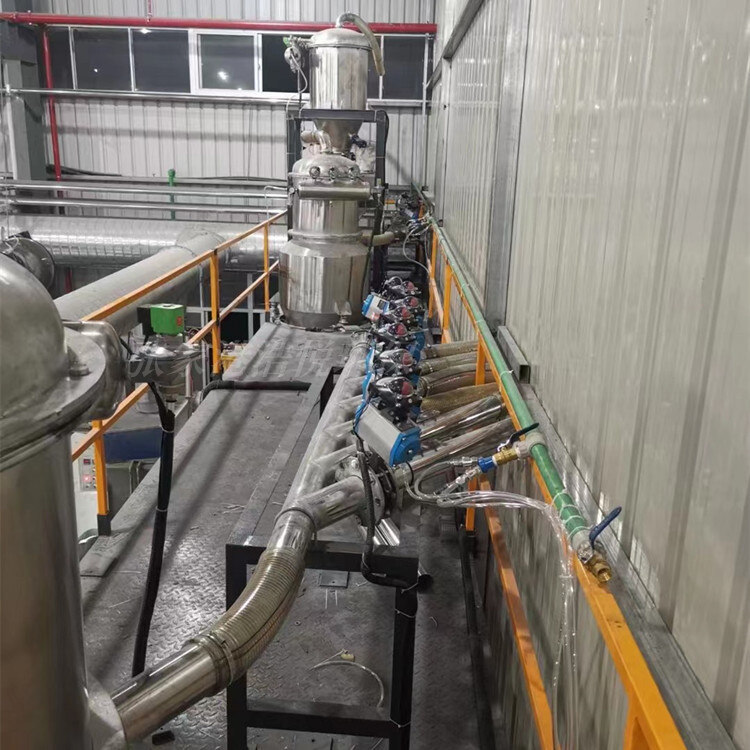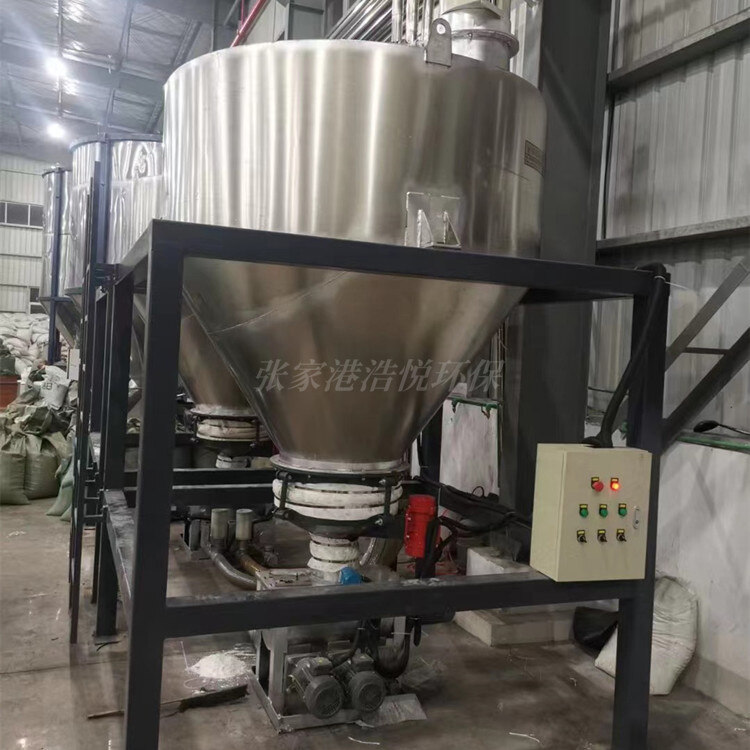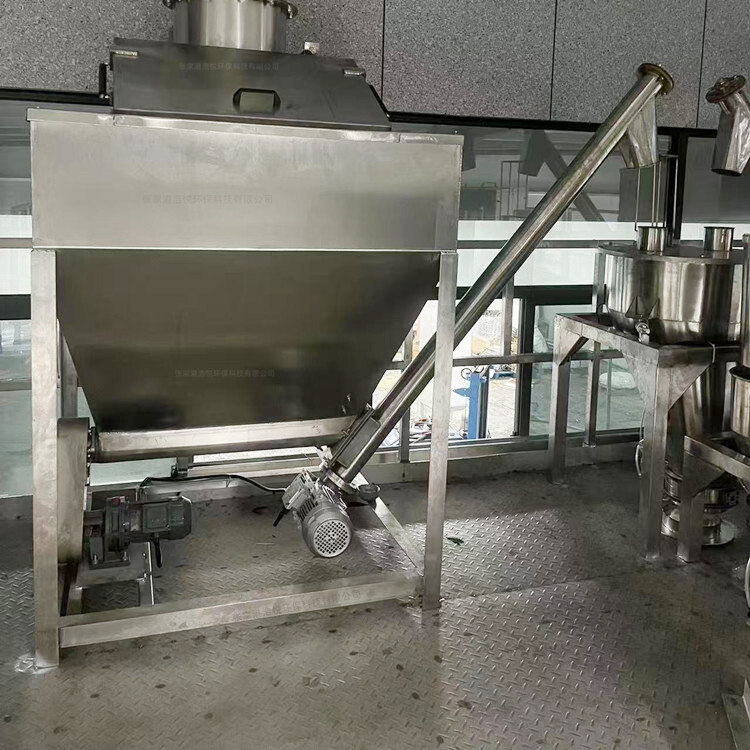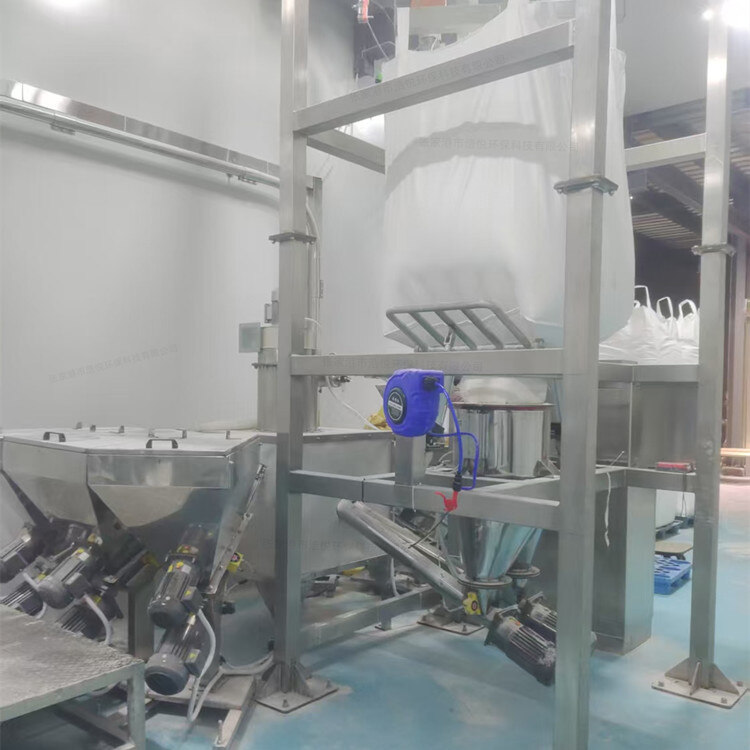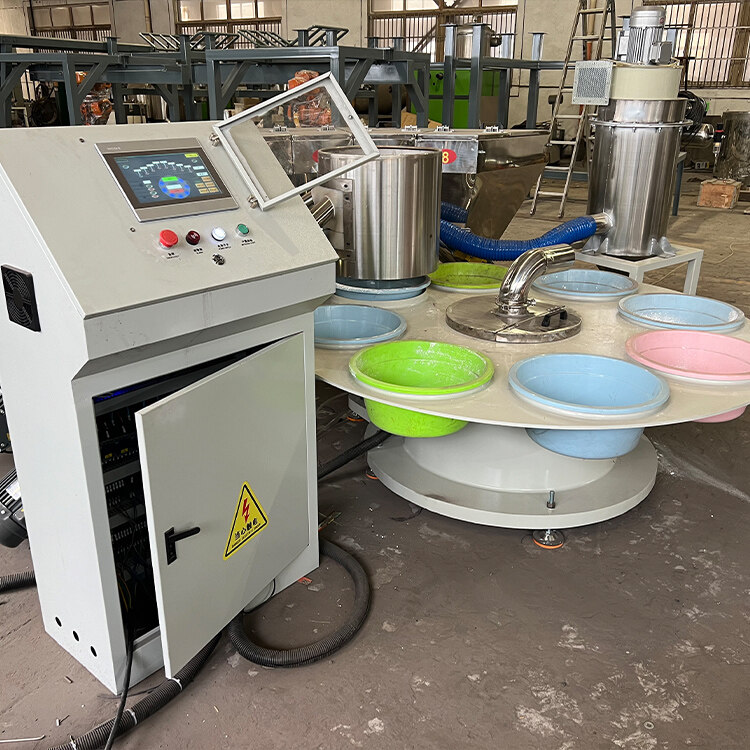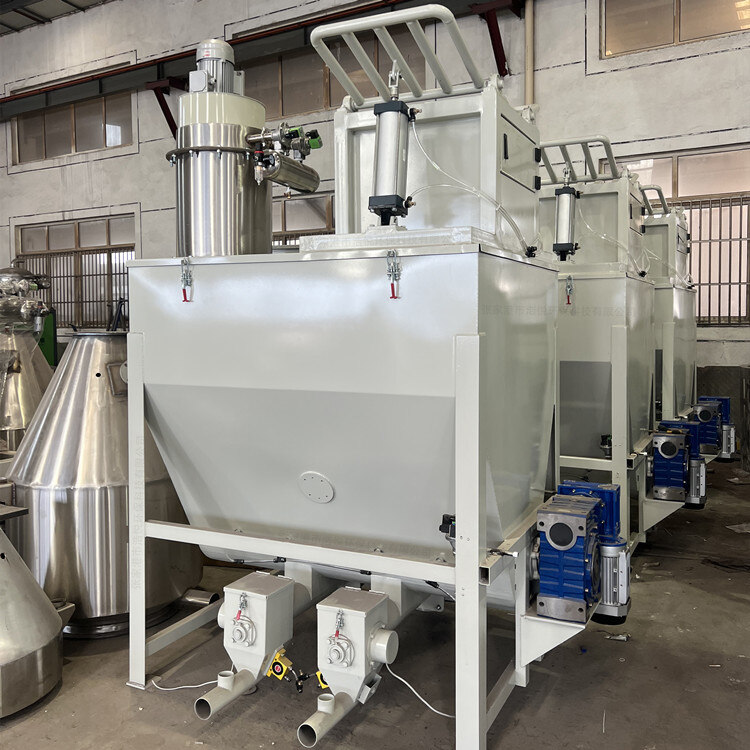- Introduction to automatic batching machine and fully automatic batching machine equipment
- The powder metering system tells you about the introduction of the mixing and drying machine
- 1000kg vacuum feeding machine
- Fully automatic small material batching system
- Research on Innovation of Automatic Weighing Machine Technology
- Design and operation of automatic batching system using PLC, industrial computer and frequency converter
Automatic metering manufacturer
- Category:Automatic metering and conveying equipment
- Hits:110次
- Release Date:2025-06-27
- Share:
- Inquiry
- Details
In the current era of rapid development of Industry 4.0 and intelligent manufacturing, automatic metering systems have become a key technological equipment to ensure production efficiency, product quality, and commercial fairness. From precise filling of food and beverages, to precise proportioning of chemical raw materials, to flow monitoring in the energy sector, automatic metering systems are widely used in various industries due to their high precision, automation, and intelligence, promoting innovation in production and operation modes.
1、 Definition and Core Principles of Automatic Measurement System
An automatic measurement system is a comprehensive system that automatically measures, calculates, controls, and processes physical quantities (such as mass, volume, flow rate, length, etc.) through the collaborative operation of sensors, controllers, actuators, and other components. The core principle is based on the conversion of physical quantities and signal processing, which converts the measured physical parameters into processable signals such as electrical signals and digital signals, and then calculates accurate measurement results through algorithms.
Taking quality measurement as an example, the most common method is to utilize the strain effect of weighing sensors. When an object is placed on the weighing platform, the elastic body inside the sensor deforms, and the resistance strain gauge attached to the elastic body also deforms, causing a change in resistance value. The resistance change is converted into a voltage signal through a Wheatstone bridge, amplified by an amplifier, converted into a digital signal by an A/D converter, and finally calculated by the control system to determine the mass of the object. Other types of measurement, such as electromagnetic induction principle in flow measurement and volumetric method in volume measurement, are based on similar physical conversion and signal processing logic to achieve accurate measurement.
2、 The core components of an automatic metering system
(1) Sensor unit
Sensors are the "perception organs" of automatic measurement systems, responsible for converting physical quantities into electrical signals. Different types of measurement requirements correspond to different sensors:
Weighing sensors: divided into resistance strain type, capacitance type, piezoelectric type, etc., widely used in material weighing, batching and other scenarios. Resistance strain type has become the most commonly used type due to its good stability and high accuracy, with an accuracy of up to 0.01% FS (full range).
Flow sensors: including electromagnetic flow meters, turbine flow meters, ultrasonic flow meters, etc. Electromagnetic flowmeter is suitable for flow measurement of conductive liquids, with an accuracy of ± 0.5%; Turbine flow meters are commonly used for high-precision flow measurement in fields such as petroleum and chemical engineering.
Displacement sensors, such as grating rulers and magnetic grating rulers, are mainly used for measuring length and position, playing an important role in mechanical processing and automated assembly, with a resolution of up to micrometers.
(2) Controller unit
The controller is the "brain" of the automatic metering system, which receives signals transmitted by sensors, performs calculations, analysis, and processing, and sends control signals according to preset programs or instructions. Common controllers include programmable logic controllers (PLC), industrial computers (IPC), etc. PLC is widely used in industrial automatic measurement systems due to its high reliability and strong anti-interference ability; Industrial computers are suitable for scenarios that require complex algorithms and data processing, such as high-precision dynamic weighing systems.
(3) Execution mechanism unit
The executing mechanism completes corresponding actions according to the instructions of the controller, achieving metrological control. For example, in an automatic batching system, actuators such as electric valves, screw conveyors, and belt scales accurately control the transportation and feeding of materials based on the material ratio calculated by the controller; In the filling system, the cylinder driven filling head controls the filling amount of liquid based on the measurement results.
(4) Display and Data Processing Unit
This unit is responsible for visually displaying measurement results and storing, analyzing, and transmitting data. Touchscreens, LED displays, and other human-computer interaction interfaces allow operators to view measurement data and set parameters in real-time; At the same time, the system uploads data to the factory management system (MES) through network interfaces such as Ethernet, RS485, etc., facilitating statistical analysis and quality traceability of production data.
3、 Typical application scenarios of automatic metering systems
(1) Industrial production field
Chemical industry: In the preparation and reaction process of chemical raw materials, the automatic metering system precisely controls the input amount of various chemicals, ensures accurate reaction ratios, and improves product quality and stability. For example, in paint production, precise control of the ratio of resin, pigment, solvent and other raw materials is achieved through the combination of flow measurement and weighing measurement.
Food and beverage industry: used for quantitative packaging and filling of products, such as bottle (can) packaging production lines for beverages. The automatic measuring system controls the filling volume error within ± 1% to ensure product capacity consistency; In food processing, automatic weighing and measuring systems achieve precise proportioning of raw materials, improving food taste and quality.
Pharmaceutical industry: Strict GMP standards require precise and error free material measurement during the drug production process. The automatic metering system ensures the accuracy of drug ingredients through high-precision weighing and flow control, while achieving full process recording and traceability of data to ensure drug quality and safety.
(2) In the field of commercial trade
Gas station: The automatic metering system inside the gas dispenser uses flow sensors and electronic controllers to accurately measure the fuel volume and display the consumption amount, ensuring fair and just transactions.
Electronic scales: In agricultural markets, logistics warehouses, and other places, automatic weighing and measuring equipment such as electronic scales and floor scales are widely used to achieve fast and accurate measurement of the weight of goods and improve transaction efficiency.
(3) In the field of energy and environmental protection
Energy metering: In the process of natural gas, electricity and other energy transmission, the automatic metering system monitors the flow and consumption in real time, providing data support for energy settlement and energy consumption analysis, and helping enterprises save energy and reduce consumption. For example, the application of ultrasonic flow meters in natural gas long-distance pipelines can achieve high-precision and pressure loss free flow measurement.
Environmental monitoring: In sewage treatment plants, automatic metering systems monitor parameters such as sewage flow rate and pollutant concentration, providing data basis for sewage treatment process control and environmental supervision; The automatic measuring equipment of the air quality monitoring station detects the real-time content of pollutants such as PM2.5 and sulfur dioxide, ensuring the accuracy and timeliness of environmental monitoring.
4、 The Technological Development Trend of Automatic Measurement System
Intelligence and Networking: With the development of the Internet of Things (IoT), big data, and artificial intelligence technologies, automatic measurement systems will have stronger intelligent analysis capabilities. By learning and analyzing a large amount of measurement data, the system can achieve functions such as fault prediction, automatic calibration, and optimized control; At the same time, connecting with cloud platforms enables remote monitoring and management, improving operational efficiency.
High precision and dynamic measurement: In order to meet the needs of high-end manufacturing, scientific research and other fields, automatic measurement systems will continuously improve measurement accuracy and break through existing technological bottlenecks; At the same time, we will strengthen the research and development of dynamic measurement technology to achieve accurate measurement of fast-moving objects, such as real-time weighing and dynamic flow measurement on high-speed production lines.
Multi functional integration: Future automatic metering systems will integrate multiple measurement functions into one, achieving synchronous measurement and comprehensive analysis of multiple parameters such as mass, volume, temperature, pressure, etc., reducing equipment costs and installation space, and improving system applicability and flexibility.


